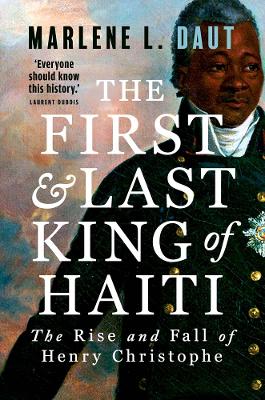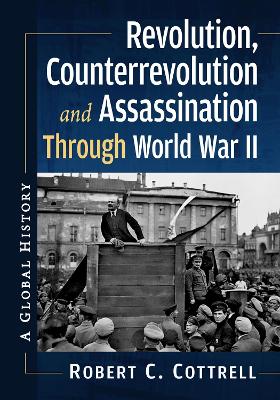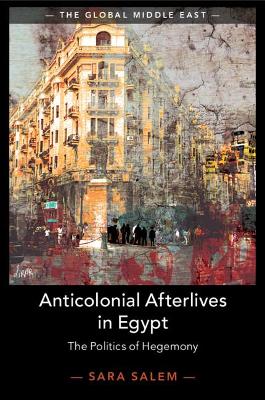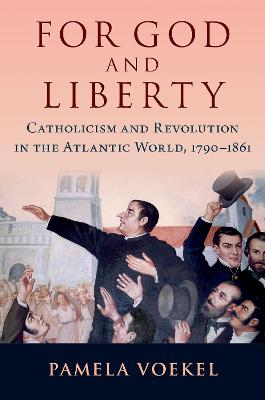Middle East in 1958
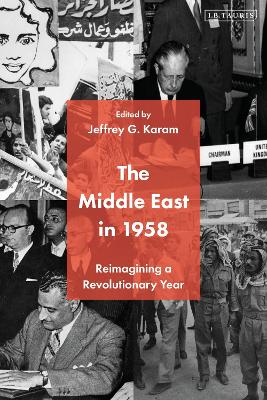 portes grátis
portes grátis
Middle East in 1958
Reimagining a Revolutionary Year
Karam, Jeffrey G.
Bloomsbury Publishing PLC
09/2020
248
Dura
Inglês
9781788319423
15 a 20 dias
526
Descrição não disponível.
Foreword: Salim Yaqub, University of California, Santa Barbara
Chapter 1: Reimagining 1958 Through the Lenses of Multilingual Sources and Interdisciplinary Perspectives, Jeffrey G. Karam, Lebanese American University
Part 1 - The Regional and International Context of 1958: Declining and Rising Powers in the Middle East
Chapter 2: The Point of Departure: The Impact of the Revolutionary Year of 1958 on British Policy, Robert McNamara, Ulster University
Chapter 3: France and the Middle East in 1958: Continuity and Change Through Crisis, Sofia Papastamkou, French National Centre for Scientific Research (CNRS), University of Lille.
Chapter 4: Cautious Revisionism and the Limits of Hegemony in 1958: A Revolutionary Year for the United States in the Middle East, Jeffrey G. Karam, Lebanese American University
Chapter 5: The 'Partisans of Peace' Between Baku and Moscow: The Soviet Experience of 1958, Elizabeth Bishop, Texas State University-San Marcos
Part 2 - Rivalry and Alliances between Arab and Non-Arab States: Regionalizing Dynamics of the Cold War
Chapter 6: Saudi Arabia in the Crucible of 1958, Nathan Citino, Rice University
Chapter 7: Egypt's Revolutionary Year: Regime Consolidation at Home, Pragmatism Abroad, and Neutralism in the Cold War, Dina Rezk, University of Reading
Chapter 8: The Outsider Inside: Turkey and the Domino Effect of Arab Nationalism in 1958, Murat Kasapsaracoglu, Antalya Bilim University
Chapter 9: Creating the 'Island of Stability': Iran, the Cold War, and American Cultural Diplomacy at the End of the 1950s. John Ghazvinian, University of Pennsylvania
Part 3 - Connecting the Local to the Global: Revolutions, Wars, and Coups in the Middle East
Chapter 10: How about 1958 in Algeria? A Transnational Event in the Context of the War of Independence, Sylvie Thenault, French National Centre for Scientific Research, University of Paris 1 Pantheon-Sorbonne
Chapter 11: The Iraqi Revolution of 1958: Its Historic Significance and Relevance for the Present, Juan Romero, Western Kentucky University
Chapter 12: No Turning Back: Syria and the 1958 Watershed, Fadi Esber, London School of Economics and Political Science
Chapter 13: The Crisis of 1958 in Lebanon: Political Rivalries, Caroline Attie, Dar al Hekma University
Chapter 14: Evolution and Revolution: Jordan in 1958, Clea Hupp, Syracuse University
Chapter 15: Reflections and Conclusions from the Revolutionary Year of 1958, Jeffrey G. Karam, Lebanese American University
Chapter 1: Reimagining 1958 Through the Lenses of Multilingual Sources and Interdisciplinary Perspectives, Jeffrey G. Karam, Lebanese American University
Part 1 - The Regional and International Context of 1958: Declining and Rising Powers in the Middle East
Chapter 2: The Point of Departure: The Impact of the Revolutionary Year of 1958 on British Policy, Robert McNamara, Ulster University
Chapter 3: France and the Middle East in 1958: Continuity and Change Through Crisis, Sofia Papastamkou, French National Centre for Scientific Research (CNRS), University of Lille.
Chapter 4: Cautious Revisionism and the Limits of Hegemony in 1958: A Revolutionary Year for the United States in the Middle East, Jeffrey G. Karam, Lebanese American University
Chapter 5: The 'Partisans of Peace' Between Baku and Moscow: The Soviet Experience of 1958, Elizabeth Bishop, Texas State University-San Marcos
Part 2 - Rivalry and Alliances between Arab and Non-Arab States: Regionalizing Dynamics of the Cold War
Chapter 6: Saudi Arabia in the Crucible of 1958, Nathan Citino, Rice University
Chapter 7: Egypt's Revolutionary Year: Regime Consolidation at Home, Pragmatism Abroad, and Neutralism in the Cold War, Dina Rezk, University of Reading
Chapter 8: The Outsider Inside: Turkey and the Domino Effect of Arab Nationalism in 1958, Murat Kasapsaracoglu, Antalya Bilim University
Chapter 9: Creating the 'Island of Stability': Iran, the Cold War, and American Cultural Diplomacy at the End of the 1950s. John Ghazvinian, University of Pennsylvania
Part 3 - Connecting the Local to the Global: Revolutions, Wars, and Coups in the Middle East
Chapter 10: How about 1958 in Algeria? A Transnational Event in the Context of the War of Independence, Sylvie Thenault, French National Centre for Scientific Research, University of Paris 1 Pantheon-Sorbonne
Chapter 11: The Iraqi Revolution of 1958: Its Historic Significance and Relevance for the Present, Juan Romero, Western Kentucky University
Chapter 12: No Turning Back: Syria and the 1958 Watershed, Fadi Esber, London School of Economics and Political Science
Chapter 13: The Crisis of 1958 in Lebanon: Political Rivalries, Caroline Attie, Dar al Hekma University
Chapter 14: Evolution and Revolution: Jordan in 1958, Clea Hupp, Syracuse University
Chapter 15: Reflections and Conclusions from the Revolutionary Year of 1958, Jeffrey G. Karam, Lebanese American University
Este título pertence ao(s) assunto(s) indicados(s). Para ver outros títulos clique no assunto desejado.
Foreword: Salim Yaqub, University of California, Santa Barbara
Chapter 1: Reimagining 1958 Through the Lenses of Multilingual Sources and Interdisciplinary Perspectives, Jeffrey G. Karam, Lebanese American University
Part 1 - The Regional and International Context of 1958: Declining and Rising Powers in the Middle East
Chapter 2: The Point of Departure: The Impact of the Revolutionary Year of 1958 on British Policy, Robert McNamara, Ulster University
Chapter 3: France and the Middle East in 1958: Continuity and Change Through Crisis, Sofia Papastamkou, French National Centre for Scientific Research (CNRS), University of Lille.
Chapter 4: Cautious Revisionism and the Limits of Hegemony in 1958: A Revolutionary Year for the United States in the Middle East, Jeffrey G. Karam, Lebanese American University
Chapter 5: The 'Partisans of Peace' Between Baku and Moscow: The Soviet Experience of 1958, Elizabeth Bishop, Texas State University-San Marcos
Part 2 - Rivalry and Alliances between Arab and Non-Arab States: Regionalizing Dynamics of the Cold War
Chapter 6: Saudi Arabia in the Crucible of 1958, Nathan Citino, Rice University
Chapter 7: Egypt's Revolutionary Year: Regime Consolidation at Home, Pragmatism Abroad, and Neutralism in the Cold War, Dina Rezk, University of Reading
Chapter 8: The Outsider Inside: Turkey and the Domino Effect of Arab Nationalism in 1958, Murat Kasapsaracoglu, Antalya Bilim University
Chapter 9: Creating the 'Island of Stability': Iran, the Cold War, and American Cultural Diplomacy at the End of the 1950s. John Ghazvinian, University of Pennsylvania
Part 3 - Connecting the Local to the Global: Revolutions, Wars, and Coups in the Middle East
Chapter 10: How about 1958 in Algeria? A Transnational Event in the Context of the War of Independence, Sylvie Thenault, French National Centre for Scientific Research, University of Paris 1 Pantheon-Sorbonne
Chapter 11: The Iraqi Revolution of 1958: Its Historic Significance and Relevance for the Present, Juan Romero, Western Kentucky University
Chapter 12: No Turning Back: Syria and the 1958 Watershed, Fadi Esber, London School of Economics and Political Science
Chapter 13: The Crisis of 1958 in Lebanon: Political Rivalries, Caroline Attie, Dar al Hekma University
Chapter 14: Evolution and Revolution: Jordan in 1958, Clea Hupp, Syracuse University
Chapter 15: Reflections and Conclusions from the Revolutionary Year of 1958, Jeffrey G. Karam, Lebanese American University
Chapter 1: Reimagining 1958 Through the Lenses of Multilingual Sources and Interdisciplinary Perspectives, Jeffrey G. Karam, Lebanese American University
Part 1 - The Regional and International Context of 1958: Declining and Rising Powers in the Middle East
Chapter 2: The Point of Departure: The Impact of the Revolutionary Year of 1958 on British Policy, Robert McNamara, Ulster University
Chapter 3: France and the Middle East in 1958: Continuity and Change Through Crisis, Sofia Papastamkou, French National Centre for Scientific Research (CNRS), University of Lille.
Chapter 4: Cautious Revisionism and the Limits of Hegemony in 1958: A Revolutionary Year for the United States in the Middle East, Jeffrey G. Karam, Lebanese American University
Chapter 5: The 'Partisans of Peace' Between Baku and Moscow: The Soviet Experience of 1958, Elizabeth Bishop, Texas State University-San Marcos
Part 2 - Rivalry and Alliances between Arab and Non-Arab States: Regionalizing Dynamics of the Cold War
Chapter 6: Saudi Arabia in the Crucible of 1958, Nathan Citino, Rice University
Chapter 7: Egypt's Revolutionary Year: Regime Consolidation at Home, Pragmatism Abroad, and Neutralism in the Cold War, Dina Rezk, University of Reading
Chapter 8: The Outsider Inside: Turkey and the Domino Effect of Arab Nationalism in 1958, Murat Kasapsaracoglu, Antalya Bilim University
Chapter 9: Creating the 'Island of Stability': Iran, the Cold War, and American Cultural Diplomacy at the End of the 1950s. John Ghazvinian, University of Pennsylvania
Part 3 - Connecting the Local to the Global: Revolutions, Wars, and Coups in the Middle East
Chapter 10: How about 1958 in Algeria? A Transnational Event in the Context of the War of Independence, Sylvie Thenault, French National Centre for Scientific Research, University of Paris 1 Pantheon-Sorbonne
Chapter 11: The Iraqi Revolution of 1958: Its Historic Significance and Relevance for the Present, Juan Romero, Western Kentucky University
Chapter 12: No Turning Back: Syria and the 1958 Watershed, Fadi Esber, London School of Economics and Political Science
Chapter 13: The Crisis of 1958 in Lebanon: Political Rivalries, Caroline Attie, Dar al Hekma University
Chapter 14: Evolution and Revolution: Jordan in 1958, Clea Hupp, Syracuse University
Chapter 15: Reflections and Conclusions from the Revolutionary Year of 1958, Jeffrey G. Karam, Lebanese American University
Este título pertence ao(s) assunto(s) indicados(s). Para ver outros títulos clique no assunto desejado.


